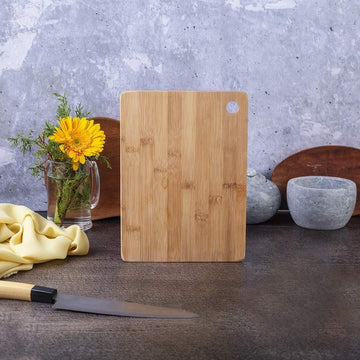
Efficient and safe food preparation begins with high-quality kitchen equipment, including cutting boards and utility knives. Not only do these tools make your work easier, but they are also crucial for maintaining food hygiene. With a wide variety available on the market, however, choosing the right cutting board or knife can be a daunting task. In this post, we are going to discuss how to choose the best kitchen cutting board and utility knife based on the materials, durability, and maintenance needs.
Kitchen Cutting Boards:
The material of a cutting board determines its durability, maintenance needs, and food safety. The most common cutting board materials include wood, plastic, glass, and bamboo.
Wood cutting boards are sturdy, natural, and can last for years with proper maintenance. They are gentle on the knife edges and won’t dull them quickly. However, wood boards require thorough cleaning and drying after use since they are porous, which can harbor bacteria and germs.
Plastic cutting boards are affordable, easy to clean and sanitize, and lightweight. They are available in various colors, which helps to prevent cross-contamination when preparing different foods. However, plastic boards tend to scratch and warp quickly, making them less durable than other materials.
Bamboo boards are eco-friendly, and like wood, are also gentle on knife edges. Bamboo is strong and durable, and it resists scratches and water damage. However, bamboo cutting boards are challenging to clean, and they can develop mold and bacteria if not sanitized regularly.
Glass cutting boards are highly durable, non-porous, and easy to clean. They are ideal for cutting fruits, vegetables, and raw meat. Glass boards also come in various sizes, colors, and designs, which make them aesthetically appealing in the kitchen. On the downside, glass boards are hard on the knife edges, making them dull quicker than other surfaces.
Utility Knives:
A utility knife is a versatile tool for chopping, slicing, and dicing ingredients in the kitchen. The size, shape, and material of the blade of the knife determine its cutting efficiency, durability, and maintenance needs.
Stainless steel is the most common material for utility knives due to its high resistance to corrosion and ease of sharpening. Stainless steel knives usually have a smooth edge that cuts cleanly, reducing the chances of bruising or shredding the ingredients.
Ceramic knives are highly durable, lightweight, and have a sharp edge that lasts for a long time. They are also non-reactive, which means they do not absorb flavors or odors from the food. However, ceramic knives are brittle and can chip or crack if used on hard surfaces such as bones or frozen foods.
Carbon steel knives are tough, hard, and stay sharp for a long time without frequent sharpening. They are ideal for heavy-duty applications like cutting meat and have the potential for high-edge retention. However, carbon steel knives require oiling and drying after use to prevent rust, which can damage the blade’s integrity.
In conclusion, choosing the best kitchen cutting board and utility knife requires careful consideration of the material, durability, and maintenance needs. Wood, plastic, bamboo, and glass are the most common cutting board materials. Each has its pros and cons, so you need to weigh them based on your preferences and food safety concerns. As for utility knives, stainless steel, ceramic, and carbon steel are the most widely used materials. Depending on your cutting tasks, you can select a blade that is sharp, long-lasting, and easy to maintain. With these tips in mind, you can now make an informed decision on the best cutting board and utility knife for your kitchen needs. Happy cooking!
